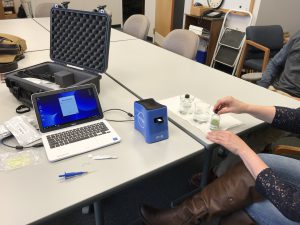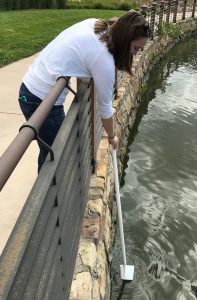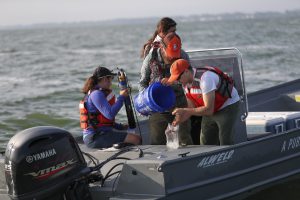To really understand the nature of ecosystems and quantify the impacts of disturbance to their function, we must collect as much data as possible. The clearer the picture the better our understanding. Often limits in personnel to proper sample large ecosystems prevents researchers from drawing that clear picture.

A recent article in the Toledo Blade highlights the value of the work that citizen scientists can do to advance research. Prominent in the article is NCCOS supported research at Bowling Green State University enlisting fishing boat captains, beach managers, drinking water plant operators and NOAA’s phytoplankton monitoring network to help collect information on harmful algal bloom toxins in Lake Erie.
In this initial phase, the aforementioned pre-selected group of citizen scientists will collect water samples and run them through an easy-to-use, field-portable toxin detection technology supplied by the project. Along with the water sample tests, they will also provide wind, air and water temperature data.
Because these groups of citizen scientists are out almost every day before and during the bloom season, they will be able to provide the research team with real time data on how bloom toxin concentrations change over the course of the bloom. They will also help in the collection of critical data to support the development of toxin forecasting models used to predict changes in toxin concentrations and provide water treatment plant operators and other water managers advanced notice of when toxic blooms may be moving in their direction.
This project is funded through the NCCOS Monitoring and Event Response for Harmful Algal Blooms Program (MERHAB).


Learn more about citizen science volunteer opportunities with the NOAA National Ocean Service.
